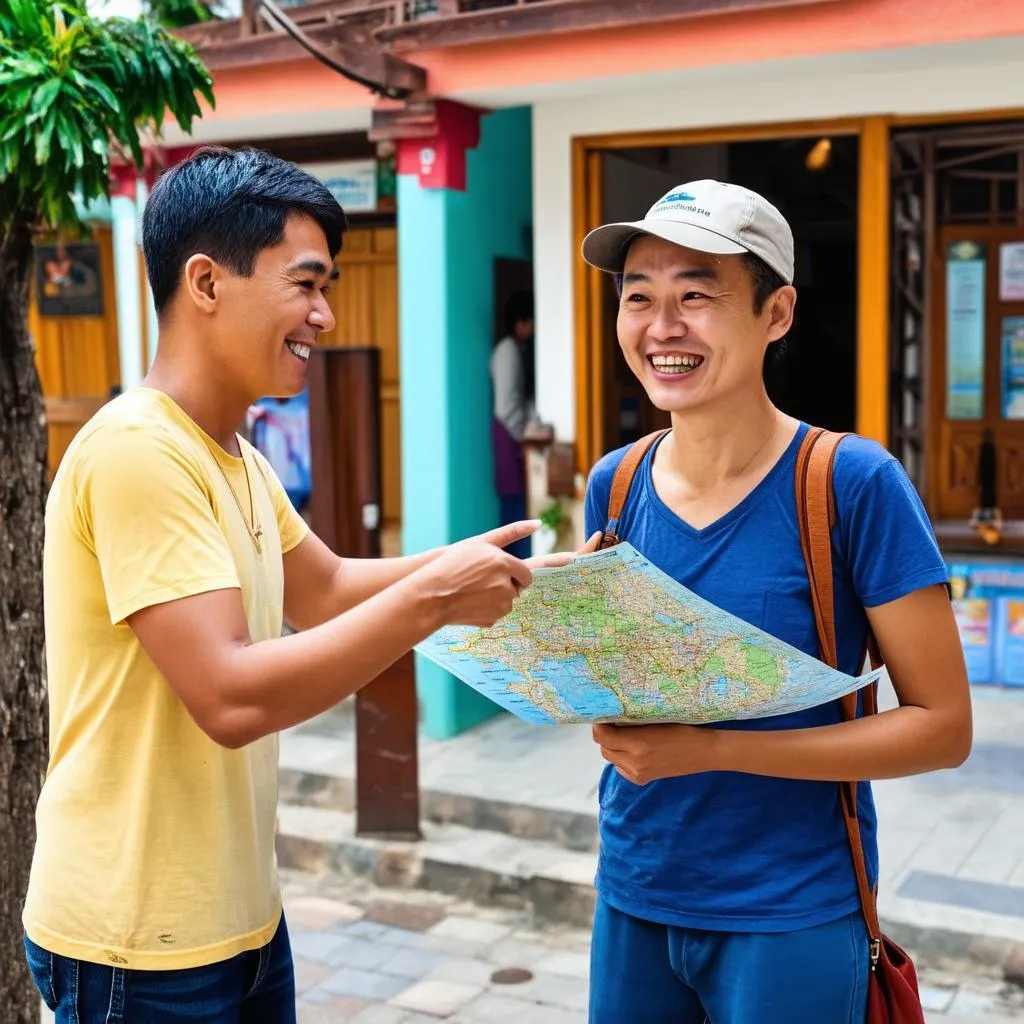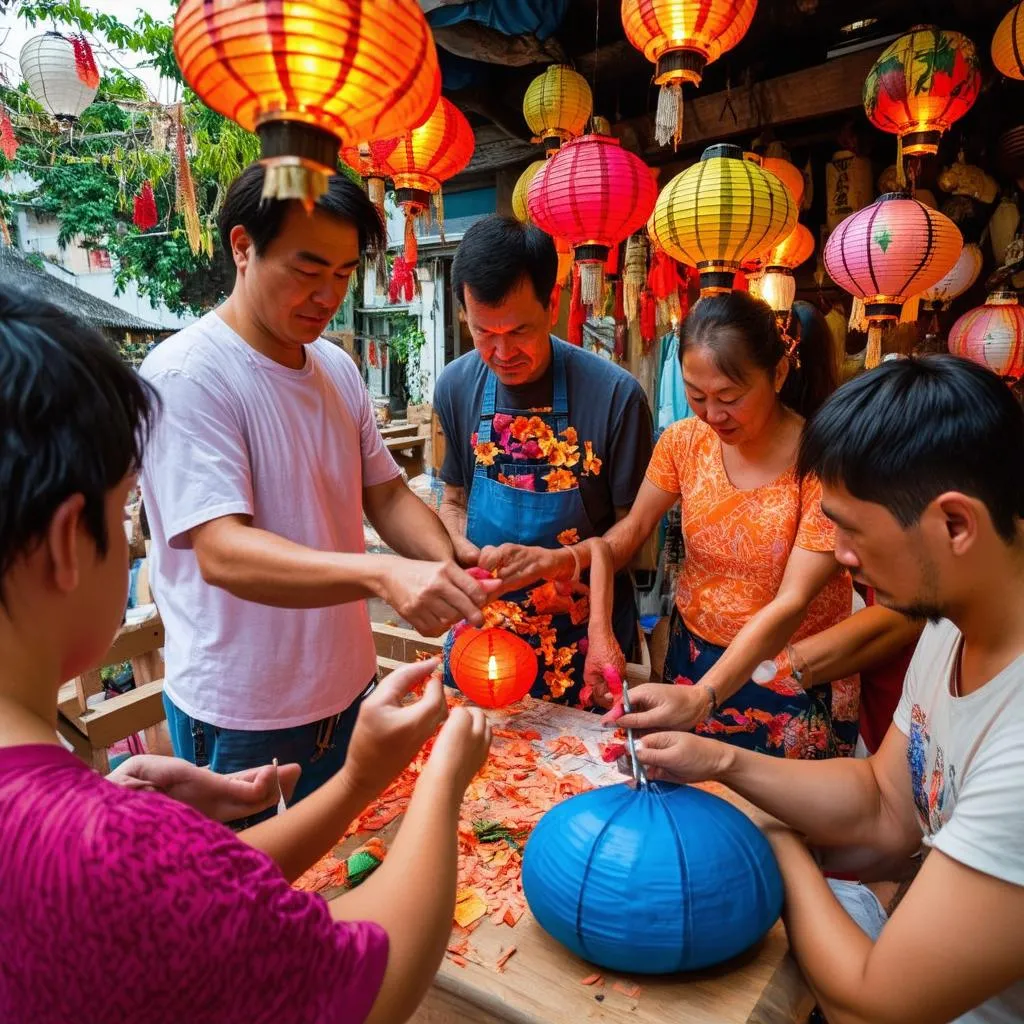Have you ever been on a trip and struggled to connect with locals? Or perhaps you work in the tourism industry and want to ensure your interactions with visitors are as smooth and enjoyable as possible? Effective communication is key to enriching travel experiences, but navigating cultural differences can sometimes be tricky.
This guide provides practical tips and insights on how to communicate effectively with tourists, turning potential awkward encounters into meaningful connections. Whether you’re exploring the bustling streets of Hanoi’s Old Quarter or the serene landscapes of Ha Long Bay, mastering a few communication strategies will undoubtedly enhance your journey and theirs.
Understanding the Importance of Clear Communication in Tourism
In the world of travel, clear communication is much more than just exchanging information – it’s about building bridges of understanding and fostering genuine connections. Imagine trying to navigate the intricate network of alleyways in Hoi An’s Ancient Town without being able to ask for directions, or missing out on the fascinating story behind a local craft because of a language barrier.
“Effective communication can transform a tourist’s experience from merely transactional to truly transformative,” says Dr. Nguyen Minh Anh, author of “Bridging Cultures Through Travel: A Communication Guide.” “It allows travelers to delve deeper into the heart of a destination, connect with locals on a personal level, and create lasting memories.”
Why is Communication so Crucial in Tourism?
- Enhances Tourist Satisfaction: Clear communication ensures tourists feel heard, understood, and respected, leading to greater satisfaction with their overall experience.
- Promotes Cultural Exchange: It facilitates the exchange of ideas, customs, and perspectives, enriching both the traveler’s and the local’s understanding of each other’s cultures.
- Boosts Local Economies: Effective communication builds trust and rapport, encouraging tourists to engage more deeply with local businesses, purchase goods and services, and contribute to the local economy.
- Creates a Welcoming Environment: When tourists feel comfortable communicating, they feel more welcomed and are more likely to return for another visit, recommending the destination to others.
 smiling tourist asking directions
smiling tourist asking directions
Practical Tips for Communicating with Tourists
1. Learn Basic Phrases in the Local Language
Even a few basic phrases like “hello,” “thank you,” and “please” can go a long way in demonstrating respect for the local culture and showing tourists that you’re willing to make an effort. Don’t be afraid to use language learning apps, phrasebooks, or online resources to pick up some essential phrases.
2. Speak Slowly and Clearly
When communicating with tourists who may not be fluent in your language, it’s essential to speak slowly and clearly. Avoid using slang or idioms that might be confusing.
3. Be Mindful of Body Language
Nonverbal cues play a significant role in communication. Maintain eye contact, use open and welcoming gestures, and be mindful of your facial expressions to convey friendliness and approachability.
4. Practice Patience and Understanding
Remember that tourists may be unfamiliar with local customs or struggle with the language barrier. Exercise patience, be understanding, and offer assistance whenever possible.
5. Use Visual Aids
Maps, photos, and gestures can be incredibly helpful when words fail to bridge the communication gap.
6. Embrace Technology
Don’t underestimate the power of translation apps, language learning tools, and online dictionaries to facilitate communication.
 group of tourists learning local craft
group of tourists learning local craft
Navigating Cultural Differences
Understanding and respecting cultural differences is paramount for effective communication with tourists. What might be considered polite in one culture could be perceived as rude in another.
For instance, in Vietnamese culture, it’s considered respectful to address elders with a title like “Ông” (grandfather) or “Bà” (grandmother) instead of using their first names. Similarly, direct eye contact, which is considered a sign of respect in many Western cultures, might be perceived as confrontational in some Asian cultures.
Researching basic cultural norms and etiquette before interacting with tourists from different backgrounds can prevent misunderstandings and foster more respectful communication.
Leveraging Feng Shui for Positive Interactions
Feng Shui, the ancient Chinese practice of harmonizing individuals with their surrounding environment, can offer valuable insights into creating positive and balanced interactions in tourism settings.
- Welcoming Entrances: Ensure hotel lobbies, restaurants, and tourist attractions have open and inviting entrances. This allows positive energy, or “chi,” to flow freely, creating a welcoming atmosphere for visitors.
- Use of Natural Elements: Incorporating natural elements like plants, water features, and natural light can create a sense of tranquility and harmony, enhancing the overall tourist experience.
- Strategic Placement: Thoughtful placement of furniture and decor can encourage interaction and flow of conversation. For instance, arranging chairs in a circular pattern can promote a sense of equality and openness during group tours.
By understanding and applying basic Feng Shui principles, those in the tourism industry can create spaces that foster positive energy and encourage meaningful interactions between visitors and locals.
FAQs about Communicating with Tourists
Q: How can I communicate with a tourist if I don’t speak their language?
A: Utilize translation apps, gesture, use visual aids like maps and photos, learn a few basic phrases in their language, or seek assistance from a multilingual individual.
Q: What are some common cultural misunderstandings to be aware of?
A: Direct eye contact, personal space, gestures, and dining etiquette can vary greatly across cultures. Researching cultural norms beforehand can prevent misinterpretations.
Q: How can I make tourists feel more welcome?
A: Greet them with a smile, offer assistance, show genuine interest in their culture, and be patient with their attempts to communicate.
Explore More with travelcar.edu.vn
For more travel tips, cultural insights, and destination guides, visit travelcar.edu.vn. We offer a wealth of resources to enhance your travel experiences and promote meaningful cultural exchange.
Conclusion
Effective communication is the cornerstone of enriching travel experiences for both tourists and locals. By embracing cultural sensitivity, learning a few basic phrases, and utilizing helpful communication strategies, we can bridge cultural divides and create more meaningful connections. Remember, a little effort in communication can go a long way in creating lasting positive memories for everyone involved.